Why Are Monitors More Expensive Than TVs – Monitors and TVs are two of the most common display devices used today.
While they share many similarities, there are notable differences in technology and features that affect their pricing. In this article, we will explore the reasons why monitors are more expensive than TVs and shed light on the factors that contribute to this price difference.
Reason Why Are Monitors More Expensive Than TVs

Monitors and TVs are essential components of our daily lives, from gaming and productivity to entertainment and leisure.
While both devices serve a similar purpose of displaying images and videos, monitors are often significantly more expensive than TVs.
This price difference can be confusing and frustrating for many consumers who may wonder why they have to pay more for a smaller device.
There are several reasons why monitors are more expensive than TVs, ranging from differences in technology and features to marketing and after-sales support.
Understanding these factors can help consumers make informed decisions when choosing between monitors and TVs and ensure they get the best value for their money.
The various reasons why monitors are more expensive than TVs provide insights into how these factors affect the pricing and performance of these devices.
Technology Differences
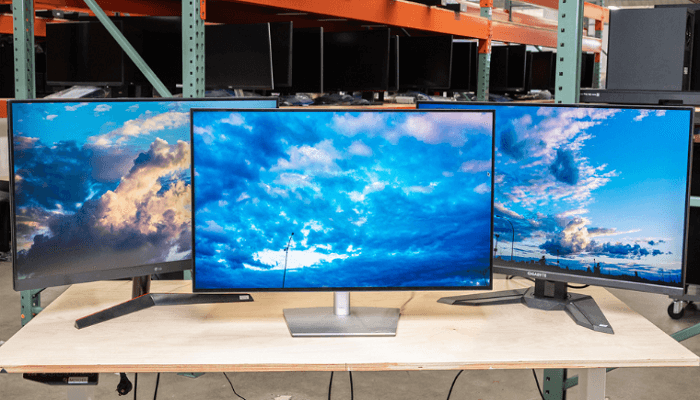
One of the main reasons why monitors are more expensive than TVs is the technology used to produce them.
Monitors are designed to provide high-quality images, sharp text, and accurate colors, making them ideal for professional use such as graphic design, photo editing, and video production.
Here are some of the technological differences that contribute to the higher cost of monitors:
Panel Type
Monitors typically use IPS (in-plane switching) or VA (vertical alignment) panels, while TVs use TN (twisted nematic) panels.
IPS and VA panels offer wider viewing angles, higher contrast ratios, and better color accuracy, but are more expensive to produce.
Refresh Rate
Monitors have a higher refresh rate than TVs, which means they can display more frames per second. This is especially important for gamers and anyone who needs a fast and smooth display without any lag or stuttering.
Response Time
Monitors have a faster response time than TVs, which are measured in milliseconds. A lower response time means that the display can react quickly to changes in the image, reducing motion blur and ghosting.
Features and Design
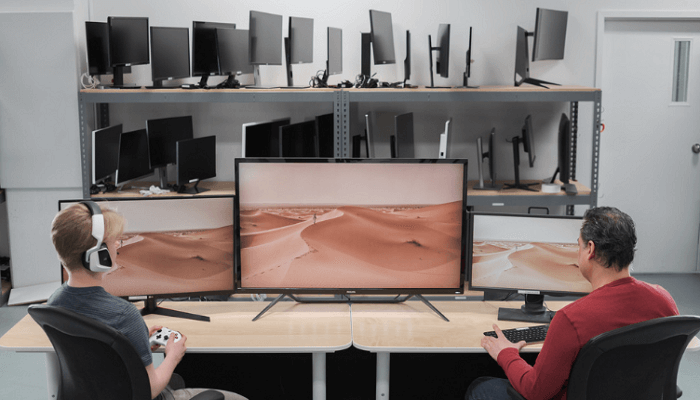
Another factor that contributes to the higher cost of monitors is their features and design. Monitors are typically designed to be used in a specific setting or environment, such as an office, studio, or gaming room.
They also offer a range of features that make them more versatile and functional, such as:
Adjustable Stand
Monitors often come with an adjustable stand that allows users to tilt, swivel, and adjust the height of the display.
This feature makes it easier to find the optimal viewing position, which can reduce eye strain and improve posture.
VESA Mounting
Many monitors have a VESA mount, which allows them to be mounted on a wall or arm. This feature is ideal for users who want to save desk space or create a multi-monitor setup.
Connectivity
Monitors usually offer a wider range of connectivity options than TVs, including HDMI, DisplayPort, VGA, and USB. This makes it easier to connect multiple devices to the monitor and switch between them.
Size and Quantity
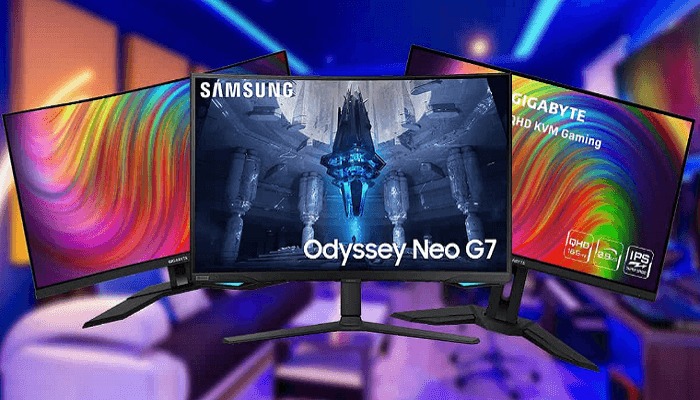
Another reason why monitors are more expensive than TVs is due to their size and quantity. Monitors are typically smaller in size than TVs, ranging from 15 inches to 34 inches.
TVs, on the other hand, can range from 32 inches to over 75 inches. This means that manufacturers can produce more TVs at a lower cost per unit, which translates into lower prices for consumers.
Monitors are also produced in smaller quantities than TVs, which means that the manufacturing process is more expensive.
This is because monitors are often designed for specific use cases or niche markets, which limits the demand and requires a more specialized production process.
TVs, on the other hand, are produced in larger quantities and sold to a wider audience, which makes them more affordable.
Brand and Marketing
Brand and marketing are two additional factors that can contribute to the higher cost of monitors. Monitors are often produced by specialized manufacturers, such as Dell, HP, or ASUS, who focus exclusively on producing high-quality displays.
These manufacturers have a reputation for producing reliable and durable products, which can command a premium price.
TVs, on the other hand, are produced by a wider range of manufacturers, including well-known brands like Samsung, LG, and Sony, as well as budget brands that prioritize affordability over quality.
This wider range of manufacturers and brands can lead to greater competition and lower prices for consumers.
Marketing and advertising can also affect the pricing of monitors and TVs.
Monitors are often marketed to professionals and enthusiasts who are willing to pay a premium for high-quality displays, while TVs are marketed to a wider audience with varying budgets and preferences.
This can lead to differences in the perceived value of each device and affect their respective prices.
Supply and Demand
Supply and demand also play a role in the pricing of monitors and TVs. Monitors are often produced in smaller quantities than TVs, which can lead to higher prices due to limited supply.
This is particularly true for monitors with specialized features or technology, which are more difficult and expensive to produce.
On the other hand, TVs are produced in larger quantities and are in higher demand, which can drive down their prices.
The wider range of sizes and models available for TVs allows for greater flexibility in pricing and allows manufacturers to offer more affordable options for consumers.
After-Sales Support
Finally, after-sales support is another factor that can contribute to the higher cost of monitors. Many monitor manufacturers offer extended warranties, technical support, and repair services that can add to the overall cost of the device.
This is particularly true for high-end monitors that are often used for professional purposes and require reliable support.
TVs, on the other hand, are often sold with basic warranties and support options that do not add significant costs to the device.
This is due in part to the larger market for TVs, which allows for greater competition and lower prices.
Do 4K Monitors Look Better Than 4K TVs?
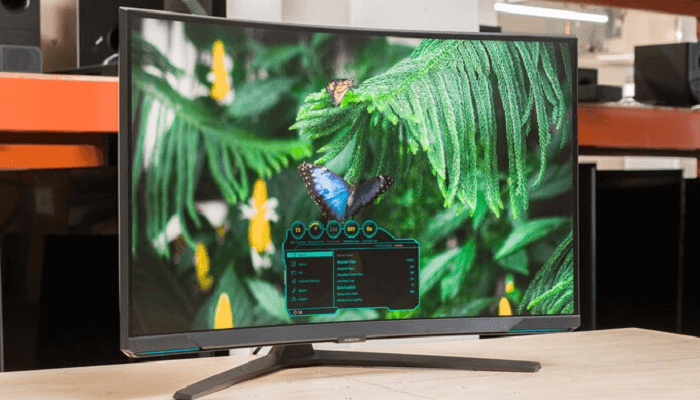
In general, 4K monitors and 4K TVs have the same resolution of 3840 x 2160 pixels, which means they can display the same level of detail and clarity in images and videos.
There are some differences in the technology and features of 4K monitors and TVs that may affect the overall visual quality and user experience.
For example, 4K monitors often use IPS or other high-quality panel technologies that offer wider viewing angles, better color accuracy, and faster response times compared to many 4K TVs.
This makes 4K monitors ideal for professional use cases such as video editing, graphic design, and photography, where color accuracy and image quality are critical.
On the other hand, some 4K TVs offer features such as high dynamic range (HDR) and wider color gamuts that are not available on most 4K monitors.
These features can enhance the overall visual quality and make movies and TV shows more immersive and enjoyable to watch.
For professional use cases, a high-quality 4K monitor may be the best choice, while for home entertainment, a 4K TV with advanced features may provide a better experience.
What is A Good Size for A Monitor?
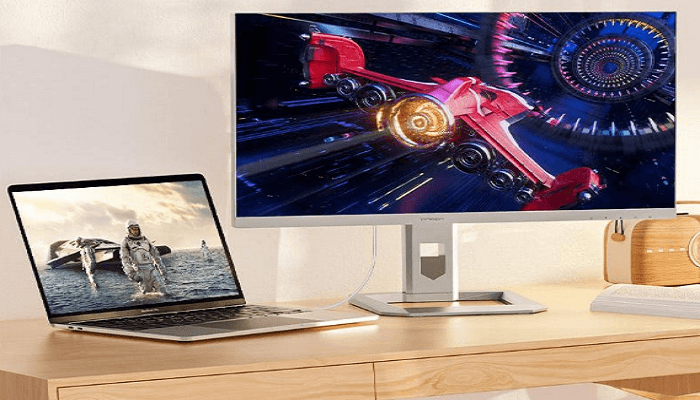
The ideal monitor size depends on several factors, including the user’s needs, the available space, and the intended use of the device.
Generally, a monitor between 24 and 27 inches is considered a good size for most users, as it provides enough screen real estate for productivity tasks and gaming while remaining comfortable to use for extended periods.
However, users who require more screen real estate, such as professionals who work with large spreadsheets or multiple applications simultaneously, may benefit from larger monitors with sizes ranging from 30 to 40 inches or more.
Conversely, users who have limited desk space or prefer a more compact setup may opt for smaller monitors between 21 and 24 inches.
The choice of monitor size should be based on the user’s personal preferences, the intended use of the device, and the available budget.
Conclusion: Why Are Monitors More Expensive Than TVs
In conclusion, there are several reasons why monitors are more expensive than TVs, including differences in technology, features, design, size and quantity, brand and marketing, supply and demand, and after-sales support.
While monitors offer superior image quality and features that make them ideal for professional use, they also come with a higher price tag due to their specialized production and marketing.
TVs, on the other hand, offer greater affordability and flexibility in size and features, making them ideal for a wider range of consumers and uses.
Related:
- Why is Alienware Laptop So Expensive
- Why is Dell Laptop So Expensive
- Why Are Razer Laptops So Expensive
- Why Are Surface Laptops So Expensive
- Why Are Laptops RAM So Expensive
- Why Are Gaming Laptops So Expensive
- Why Are Apple Pens So Expensive
- Why is HBO Max So Expensive
- Why Are Dell Monitors So Expensive
- Why is Laptop More Expensive Than Dekstop
- Why Are Raspberry Pi So Expensive